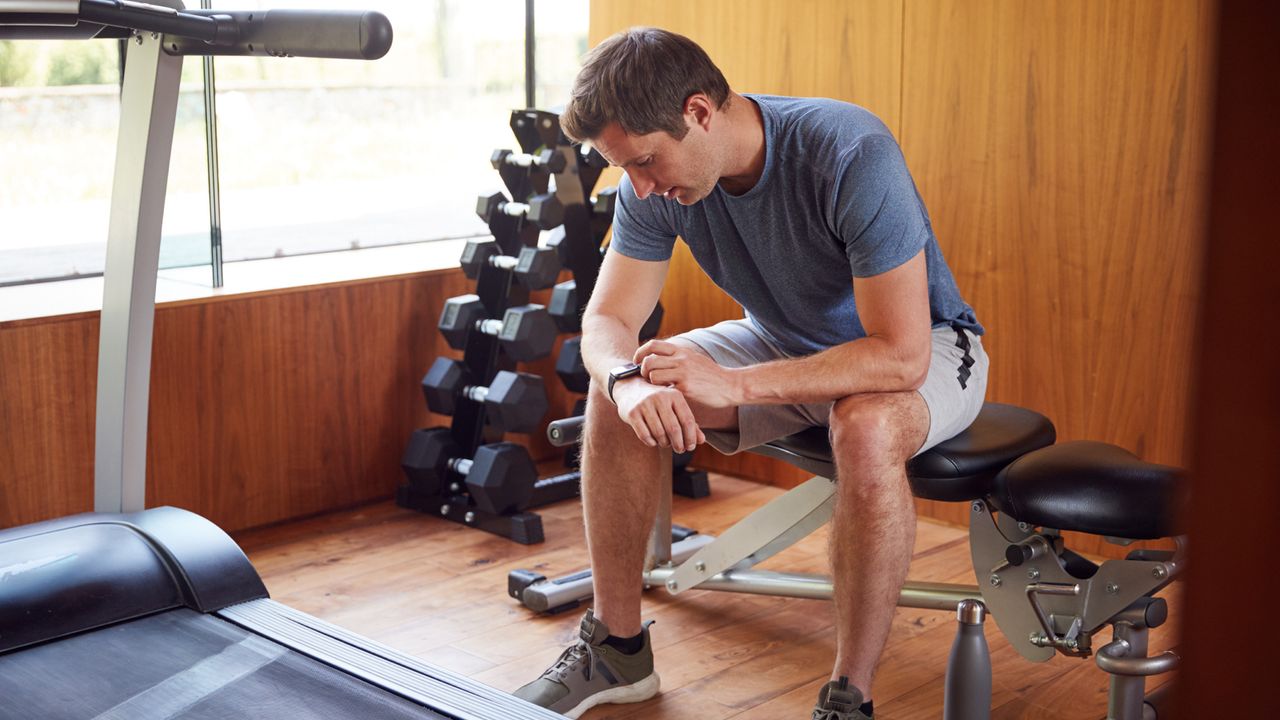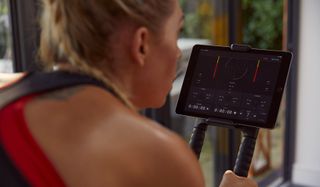
Even when there isn't a lockdown, there comes a time when even the hardiest cyclist decides it's time to concentrate on indoor cycle training. These winter training tips will help you fight back against your biorhythms, which make us naturally resistant to intense training over winter. Get your indoor bike training done right in winter, and you'll be able to work away at weaknesses.
Then, come summer, your riding will be off to a flying start.
- Indoor cycling guide: how to get started training indoors
- The best Zwift setup for every budget
- Here’s why winter training is key to summer success
1. Go digital
There are an array of excellent cycling apps around, many of them allowing you to access Tour de France levels of scientific analysis and input. Get an indoor smart trainer or advanced exercise bike such as the next generation Wattbike Atom (now from just £45 per month) and you'll have all the hardware and software you need to ride up a storm inside your living room. An Atlantic low pressure system may be pelting the roof with rain, but the professional grade cycling technology in your home will get you fit without getting wet.
Just add an app such as Zwift and you can even race like you are in the actual Tour de France.
2. Jump!
The box jump is an explosive indoor exercise which combines elements of power, balance and visualisation. Box jump benefits go beyond the sheer explosive power you’ll build having to leap onto the box. Visualisation is a crucial part of this exercise as you boost off the floor and anticipate landing on the box’s surface. Best of all, the wooden box you’ll use can be repurposed as a seating or stowage surface in the house, when it is not used for exercise.
Sign up to the T3 newsletter for smarter living straight to your inbox
Get all the latest news, reviews, deals and buying guides on gorgeous tech, home and active products from the T3 experts
3. Stay cool
Indoor trainers don’t have the same cooling environmental airflow that you would experience on a conventional road bike ride. To ensure that you don’t suffer unnecessary heat fatigue, position a fan in front of your indoor training set-up.
4. Resistance is not futile: try resistance bands
Popularised by physiotherapists for injury recover, resistance bands have not transitioned into mainstream fitness. They are wonderfully easy to use and offer the benefit of having similar tension in both the positive (explosive) and negative (contracting) range of any exercise motion, greatly stimulating those muscles which only activate when you need stretching stabilisation. If you are afraid of doing traditional squats, resistance band squats are a superb substitute.

5. Try asymmetrical training
Every cyclist has an inherent imbalance in the physiology, either biased to the right or left side. To work at reducing that disparity, an indoor trainer is unrivalled for one-legged pedalling. Try it for a few minutes in each winter training session.
6. Master your pedal stroke
Even professional riders constantly evaluate their pedal stroke. It is a lifelong cycling obsession. Some indoor trainers will help you asses the power input and balance of your pedalling, allowing you to get closer to riding the ‘perfect circle’. Winter training is a great time to really craft those small, but vital, improvements in pedalling technique. The Wattbike Atom has unique software which measures your force input and gives you a pedal effectiveness score.
7. Swing
You need to build power and balance your core. Traditional exercise wisdom has always qualified the squat and deadlift as solutions, but those exercises are fought with injury risk and difficult to master. Not to mention the sheer inconvenience of finding room to store barbells in the house. Kettlebells take up a lot less space and they are superior for developing true core power in the hips, lower back and legs. The kettlebell swing is also a much safer power exercise to master.
8. Multitask
Road riding with music or listening to a podcast is dangerous and inadvisable, as you cannot hear approaching rearward traffic or audible warnings. It is a very different scenario in your living room. Indoor winter training allows you to multitask by clocking miles and listening to some new music, or an insightful podcast, without feeling any guilt about potentially being a reckless road user.
9. Play ball
An exercise ball is a great way to improve your posture and core muscle stability whilst seated – it could be a home working life saver. At home you can also use it to activate deep muscle stability fibres in your core. The exercise ball offers an array of movements which target the abs and lower back, without requiring you to lay uncomfortably on the floor.
10. Track with technology
Try our guide to the top 6 best fitness gadgets for more focussed ways to motivate yourself and track your progress.
• This article is part of a series on fitness, supported by Wattbike.
-
 Traeger’s new Woodridge pellet barbecues have got me excited for grilling season
Traeger’s new Woodridge pellet barbecues have got me excited for grilling seasonTraeger debuts three new wood pellet grills
By Bethan Girdler-Maslen Published
-
 How to watch the Nintendo Switch 2 Direct and what to expect
How to watch the Nintendo Switch 2 Direct and what to expectWe should get a deep dive and more details on the Switch 2 in April
By Rik Henderson Published
